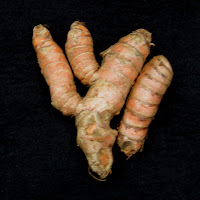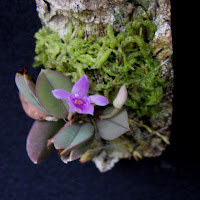
Finally I’ve gotten around to working on the bespoke fragrance described in
Alyssum's brief. It’s going to include a base note of burning cedar with a top note of sweet alyssum flowers. Because of the way I work, the first step is to create a cedar wood accord to which I’ll later add the smoky notes and whatever else is needed to complete the base.
You would think cedar would be cedar, and that cedar wood oil would do it all, right? Wrong. First, there are many different kinds of cedar and things that are called cedar, so the first question is which to use. Cedar leaf oil is another whole genre that I’m not even going to go into here. The scent I’m aiming for is something like the aromatic cedar-chest one, but the also the woody and resinous part of the incense-like burning cedar and juniper scent that I remember so vividly from winter in Arizona.
Atlas cedar,
Cedrus atlantica, is a true cedar and one of the most common cedar wood oils used in perfumery. It comes from the Atlas mountains in Morocco and does not really smell anything like the wood of a cedar chest. In fact, it has a sticky, oily, fruity, resinous scent reminiscent of myrrh. It’s a lovely material that can enhance the resinous aspect of a base, but it wouldn’t be sufficient for my purposes in and of itself. Himalayan cedar,
Cedrus deodara, has a similar resinous scent, but lighter and greener, with a hint of tarragon at first, and later pine needles.
The so-called Eastern red cedar that is used for chests, boxes and other scented cedar artifacts, also known as Virginia cedar, is not a true cedar at all, but a juniper,
Juniperus virginiana. Like Atlas cedar, it’s used extensively in perfumes. I have both the standard oil from this species as well as one called “blood cedar”, made from the red heartwood of older trees. Blood cedar is a beautiful deep red in color. The oil does have some of the cedar-chest scent, but it’s not as prominent in the oil as it is in the fresh wood. Texas cedar, which I also have, is another juniper with a similar scent. The problem with juniper oils is that when they dry down, they smell like pencil shavings. Virginia cedar is, in fact, the same wood that’s used to make old-fashioned pencils.
One of the more unusual cedar oils that I have is Port Orford cedar, also not a true cedar but
Chamaecyparus lawsonii, classified as a “false-cypress” or “white cedar”. It comes from Oregon, and smells nothing like the cedars and junipers. It has a bright, aromatic scent that’s reminiscent of the pine oil that’s sold as a cleaner and disinfectant, but has other herbal aspects as well.
In making the cedar accord, I started with Atlas cedar to give the base a balsamic body, and to counteract the pencil-shavings note in the drydown of the juniper. I added Virginia cedar and blood cedar for the heart notes, making the whole mixture a bright red color. This is going to be a colorful perfume! To get the aromatic incense-like note that’s in the fresh wood and, even more, in the burning wood, I added a trace of frankincense, and traces of a couple of different cedar-related aromachemicals that I hope will punch up the cedar-chest notes. I’m now letting it sit and marinate for a while. The next step is to meet with Alyssum, have her smell it, give me feedback, and tweak it until it’s to her liking. Then comes the smoke.

 Since my first post on sweet alyssum, I’ve examined the plants in the neighbor’s garden more thoroughly and learned that it not only comes in white, but in purple, pink, and everything in between. The flowers all smell pretty much the same regardless of color.
Since my first post on sweet alyssum, I’ve examined the plants in the neighbor’s garden more thoroughly and learned that it not only comes in white, but in purple, pink, and everything in between. The flowers all smell pretty much the same regardless of color.
















